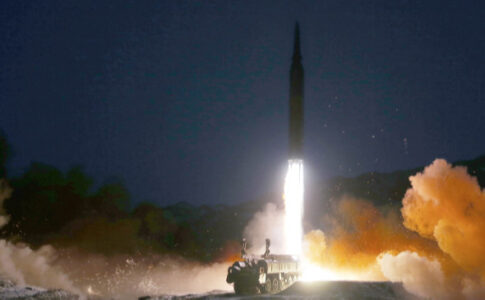On June 5, South Korean authorities announced that the DPRK had launched a ballistic missile. The launch was the DPRK’s 18th ballistic missile launch and its last since May of this year. This missile was launched toward the East Sea (Sea of Japan).
It is worth noting that the frequency of missile launches by the DPRK has increased since the beginning of 2022. For example, in March the DPRK tested its famous Hwasong-17 rocket. The DPRK authorities noted that the exercises were successful, but the Korean and Japanese governments claimed that the North Korean missiles were unguided. This time, according to South Korean sources, KN-23 missiles were used. North Korea carried out several launches in May; at least three are officially known to have taken place on May 4, 12, and 22. The other launches were not that significant. The first rocket landed in the East Sea, and residents of Japan could see it from their islands. The second rocket landed more than 200 kilometers from Japan’s borders, while other rockets landed 300 and 700 kilometers from the islands. The last rocket landed north of the islands.
The launch came after Joe Biden visited Japan and the QUAD summit. It is likely that North Korea’s missile launches are timed to the political situation in the region and express a passive response from Pyongyang. Japanese Defense Minister Nobuo Kishi officially condemned the missile launches.
North Korean President Yoon Seok-yeol told the military to strengthen North Korea’s deterrence measures and increase cooperation with the United States, concentrate on defense, and be on full alert.
The South Korean military commented on North Korea’s launches: “Our military strongly condemns North Korea’s series of provocations using ballistic missiles and seriously calls on it to immediately cease actions that increase military tensions on the peninsula and increase security problems.”
The South Korean authorities themselves said that eight short-range missiles were used during the launches. Talking about the technical characteristics of the missiles, they have a range of 110 to 670 kilometers and an altitude of 25-90 kilometers.
On June 6, in response to these launches, South Korea, supported by the United States, conducted a joint exercise in which it launched the Henmu-2 missile and the ATACMS missile. These are surface-to-surface missiles and are themselves operational-tactical missile systems. All of the projectiles were also aimed toward the Sea of Japan. These missile launches may have been Seoul’s response to Pyongyang’s launches or they may have been a planned operation because a trilateral meeting was held back in late May between U.S. Secretary of State Anthony Blinken, South Korean Foreign Minister Park Chin, and Japanese Foreign Minister Yoshima Hayashi. The meeting focused on strengthening cooperation between the three sides and denuclearization of the island. The U.S. has warned of the likelihood of Pyongyang testing nuclear weapons, which would be the first since 2017. In late May, the UN Security Council met over missile launches by the DPRK. Russia and China blocked the U.S. resolution on tougher sanctions against North Korea.
The US Department of Defence commented on the joint exercises. The main objective was to demonstrate the ability to respond quickly to crises. The United States focused on the northeastern part of the region to ensure maritime and air security there.
The statement stressed that Washington and Seoul “remain committed to maintaining peace on the Korean Peninsula and throughout the Indo-Pacific region“.
The intensity of missile launches on the Korean Peninsula has recently increased. The intensity of South Korean missile launches is directly proportional to the intensity of North Korean missile launches. Thus, there is a vicious circle: South Korea’s allies take steps in the region, Pyongyang reacts and then Seoul retaliates. North Korea is also launching missiles to test them and demonstrate its position on South Korea, especially since Yoon Seok-yeol has said that the South will distance itself politically from the North.





Better sell the Korean car before parts are impossible to get due to shortages. Better still don’t buy one now.
us and its colony south korea just finished naval drills not in south korea but in waters off south of japan, which is far away from south korea. they can’t even have military drills in south korea anymore without nk’s permission given that nk has the ability to vaporize the whole us continent.